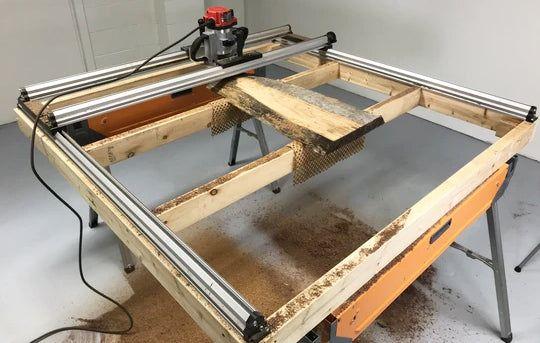Advanced Materials and Technologies in Linear Bearings: Enhancing Performance and Durability

The performance and durability of linear bearings are significantly influenced by the materials used in their construction and the advanced technologies employed in their design and manufacturing. As industries demand higher precision, greater load capacities, and longer service life, advancements in materials science and manufacturing techniques are driving innovation in linear bearing technology. This article explores the latest materials and technologies used in linear bearings, highlighting their benefits and applications.
Advanced Materials in Linear Bearings
- High-Strength Steels: High-strength steels, such as alloy steels and stainless steels, are commonly used in linear bearings to provide high load capacities and resistance to wear and corrosion. These materials are often heat-treated to further enhance their hardness and durability.
- Ceramic Materials: Ceramic materials, such as silicon nitride (Si3N4) and aluminum oxide (Al2O3), offer exceptional hardness, stiffness, and resistance to wear and corrosion. Ceramic linear bearings are ideal for applications where high precision and long service life are required, such as semiconductor manufacturing and medical equipment.
- Polymers and Composites: Polymers and composite materials, such as PTFE (Teflon), PEEK (polyether ether ketone), and fiber-reinforced composites, are used in plain linear bearings to provide low friction, self-lubrication, and resistance to chemical attack. These materials are often used in applications where lubrication is not possible or desirable.
- Coatings and Surface Treatments: Coatings and surface treatments, such as hard chrome plating, electroless nickel plating, and titanium nitride (TiN) coating, are applied to linear bearing components to enhance their hardness, wear resistance, and corrosion resistance. These treatments can significantly extend the service life of linear bearings in harsh environments.
Advanced Technologies in Linear Bearings
- Precision Grinding and Honing: Precision grinding and honing techniques are used to achieve extremely tight tolerances and smooth surface finishes on linear bearing components. These techniques ensure accurate and consistent performance.
- Finite Element Analysis (FEA): FEA is used to optimize the design of linear bearings, ensuring that they can withstand the applied loads and stresses without deformation or failure. FEA can also be used to predict the performance of linear bearings under different operating conditions.
- 3D Printing (Additive Manufacturing): 3D printing is being used to create custom linear bearing designs with complex geometries. This technology enables engineers to optimize the performance of linear bearings for specific applications and to create prototypes quickly and cost-effectively.
- Smart Sensors and Monitoring Systems: Integrating smart sensors and monitoring systems into linear bearings enables real-time monitoring of performance parameters such as load, speed, vibration, and temperature. This data can be used to optimize system performance, predict maintenance needs, and prevent failures.
- Self-Lubricating Technologies: Self-lubricating technologies, such as solid lubricant inserts and oil-impregnated materials, are used to reduce the need for external lubrication and to extend the service life of linear bearings. These technologies are particularly useful in applications where lubrication is difficult or impossible.
Applications of Advanced Linear Bearings
- High-Precision Machine Tools: Advanced linear bearings are used in high-precision machine tools to achieve extremely tight tolerances and smooth surface finishes.
- Semiconductor Manufacturing Equipment: They are used in semiconductor manufacturing equipment to provide precise and reliable linear motion in critical processes such as wafer handling and inspection.
- Medical Devices: Advanced linear bearings are used in medical devices such as MRI and CT scanners to provide smooth and accurate motion with minimal vibration.
- Aerospace Applications: They are used in aerospace applications such as aircraft control systems and satellite positioning mechanisms to provide high performance and reliability in harsh environments.
- Robotics: Advanced linear bearings are used in robotic systems to provide precise and repeatable motion with high load capacities.
Conclusion
Advanced materials and technologies are revolutionizing the design and manufacturing of linear bearings, enabling significant improvements in performance, durability, and reliability. By embracing these innovations, engineers and designers can create more efficient, precise, and robust systems for a wide range of applications.
Cerca
Categorie
- Art
- Causes
- Crafts
- Dance
- Drinks
- Film
- Fitness
- Food
- Giochi
- Gardening
- Health
- Home
- Literature
- Music
- Networking
- Altre informazioni
- Party
- Religion
- Shopping
- Sports
- Theater
- Wellness
Leggi tutto
Advantages of a Double-Sided Fingerprint Lock
A double-sided fingerprint lock offers several advantages that make it a practical and...
Architectural Coatings Industry Forecast: USD 128.63 Billion Market by 2034, CAGR 3.9%
Market Overview
Global Architectural Coatings Market size and share is currently...
Latin America Power Tools Accessories Market Share Analysis by Key Companies & Geography
Market Overview:
This report presents an extensive evaluation of the Latin America Power...
AI Data Management Industry Set to Surpass USD 239.15 Billion by 2034 as Enterprises Embrace Big Data and AI-Driven Decision-Making
The global economy is entering an era where data has become the lifeblood of every organization....
Saint Laurent Bags On Sale color combinations that will make
Sneakers have historically come in a variety of colors, especially on the streetwear scene....



